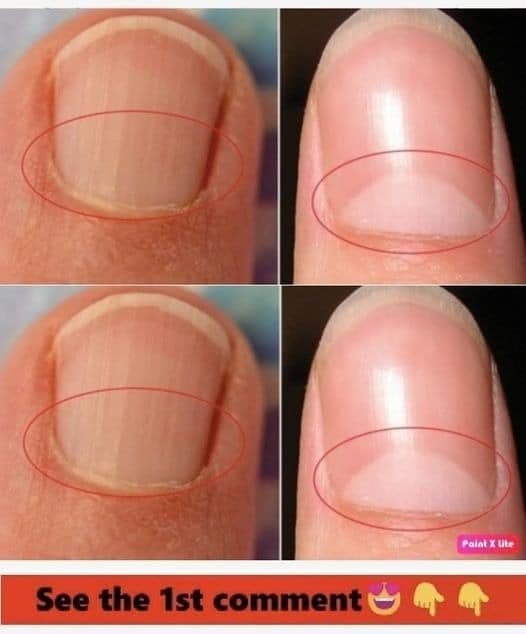ADVERTISEMENT
The Importance of the Half-Moon Shape on Your Nails and When to See a Doctor
Have you ever noticed the pale, crescent-shaped mark at the base of your fingernails? Known as the “lunula,” or “half-moon,” this small detail on your nails could tell you a lot about your health. While it’s normal to see this half-moon shape on your nails, a change or absence in its appearance may sometimes signal underlying health concerns. Here’s what the lunula reveals about your health and why an absent or altered lunula might warrant a visit to your doctor.
What Is the Lunula?
The lunula, from the Latin word meaning “little moon,” is the visible part of the root of your nail and is typically whitish in color. Most commonly seen on the thumbs, lunulae may appear on each fingernail, although their prominence can vary from person to person. This area of the nail is highly sensitive and plays a crucial role in the nail’s health and growth.
Why the Lunula Matters
The lunula can be an indicator of your overall health. For example, changes in size, color, or shape of the lunula could be signs of health conditions. Here are a few examples:
1. Nutritional Deficiencies
- A smaller or absent lunula could indicate vitamin or mineral deficiencies. Lack of iron, vitamin B12, or protein can sometimes be reflected in changes in the lunula. If you notice this and have other symptoms like fatigue or pale skin, it’s worth checking with a healthcare provider.
2. Circulatory or Cardiovascular Issues
- Lunulae can change color due to circulatory issues. Bluish or purple lunulae might suggest problems with oxygen circulation or blood flow. This is often a sign of cardiovascular problems, particularly if accompanied by other symptoms like shortness of breath or swelling.
3. Hormonal Imbalance
- Sudden changes in the size of the lunula, especially if they become unusually large, could indicate a hormonal imbalance, potentially due to thyroid issues. Hyperthyroidism, for example, can sometimes result in larger lunulae on multiple nails.
4. Metabolic or Digestive Issues
- Some studies suggest that a smaller or absent lunula can be linked to slow metabolism or digestive disorders. If your lunulae shrink or disappear and you experience digestive problems, such as bloating or irregular bowel movements, it may be worth consulting a doctor.
5. Stress and Psychological Health
- Chronic stress has also been linked to changes in nail health. When stressed, the body diverts resources away from “non-essential” processes like nail growth, potentially affecting the lunula.
For Complete Cooking STEPS Please Head On Over To Next Page Or Open button (>) and don’t forget to SHARE with your Facebook friends
ADVERTISEMENT
